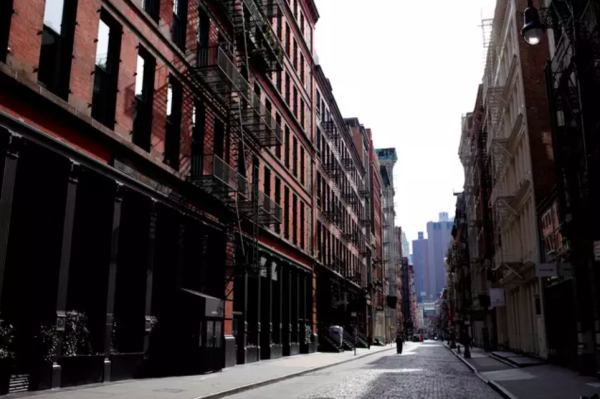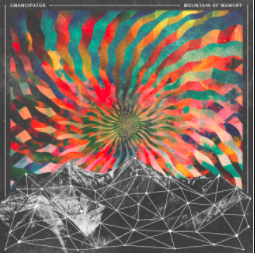Notes From a Pandemic: April 25th, 2020
by Miles Raymer
Greetings, dear friends of the present and curious citizens of the future.
The COVID-19 pandemic has provided a good opportunity for humanity to collectively interrogate an idea that we probably ought to scrutinize more often. This is the concept of “normality”––the notion that there exists some stable state of affairs we can use as a baseline for comparison with “abnormal” events or periods of time. It’s entirely unoriginal to posit normality as nothing more than a flimsy mental construct for which it’s impossible to provide a universally-applicable definition, but the pandemic has created a unique and widespread array of mental pressures that allow us to examine this trite observation from new angles.
Normality’s efficacious function is that it provides a necessary sense of comfort and anticipatory reliability. Being hung up on the endless ways one’s life could be overturned at any moment induces analysis paralysis, and we can’t usually enjoy our lives (let alone get anything useful done) without fooling ourselves into forgetting the tenuous, fragile nature of existence. When we wake up feeling “normal,” it means we have permission to ponder and strive and dream and fail and love and breathe in a space of positive possibility. This is the benefit of normality from which most of us now feel so painfully alienated.
But normality also acts as a placeholder for the things we take for granted. It’s a semantic signpost on the road to attentional indolence, a way of overlooking the world’s myriad minor miracles so we can “get stuff done” and “focus on the future”. I don’t mean to deride our drives for action and progress overmuch, but in America I think we’ve allowed these useful instincts to run the game in a way that blots out appreciation for the less glamorous and quiescent features of life.
This feels especially true when trying to fully embrace our capacity for experiencing the world and ourselves in it. We are cut off right now from places and people we long to explore and enjoy, but that same isolation can kick off an examination of the understated splendor all around us––the shimmering wood grain of a bookshelf, for example, or how “grass” is actually a bunch of different plants growing together, or the way light is distorted and beautified as it travels through glass, or a lover’s lingering embrace. In our restricted state, these sensory delights are begging to be rediscovered. I think accepting that invitation will help us not only cope with the difficulties of the moment, but also begin envisioning a post-pandemic future in which these little gifts of the universe are better recognized, preserved, and celebrated.
Looking ahead, we should also heed David Wallace-Wells‘s chilling assertion that anthropogenic climate change––the ongoing global disaster that will be with us long after COVID-19––won’t create a “new normal” to which humanity can become accustomed, but will instead destroy the illusion of normality once and for all:
Never normal again. We have already exited the state of environmental conditions that allowed the human animal to evolve in the first place, in an unsure and unplanned bet on just what that animal can endure. The climate system that raised us, and raised everything we now know as human culture and civilization, is now, like a parent, dead. And the climate system we have been observing for the last several years, the one that has battered the planet again and again, is not our bleak future in preview. It would be more precise to say that it is a product of our recent climate past, already passing behind us into a dustbin of environmental nostalgia…What that means is that we have not, at all, arrived at a new equilibrium. It is more like we’ve taken one step out on the plank off a pirate ship. (The Uninhabitable Earth, 18-9)
On that uplifting note, let’s go to the numbers. Between this moment and my last journal one week ago:
- The number of confirmed COVID-19 cases in the world increased by a factor of 0.25 (25%)
- Confirmed US cases increased by a factor of 0.30 (30%)
- Confirmed California cases increased by a factor of 0.41 (41%)
- Confirmed Humboldt County cases increased by a factor of 0.02 (2%)
- Total US deaths increased by a factor of 0.41 (41%)
- The US death rate is doubling every eleven days
- The US is now home to 32.34% of the world’s total confirmed cases, and 26.41% of the world’s total confirmed deaths
Adjusting our expectations
As the growth curves of initial surges flatten out, the question of how and when to boot society back up has come front and center. As far as I can tell, laypeople tend to be a lot more optimistic about how quickly this can happen than experts. For readers interested in this topic, I highly recommend Ezra Klein’s recent analysis of America’s options. Klein also presented a summary and discussion of his article with Matthew Yglesias on this episode of The Weeds podcast. The short version is that we’re not going to be able to safely return to the patterns of our pre-pandemic lives anytime soon, and all the proposed routes to get there are shockingly expensive, totally incompatible with American values, and/or economically ruinous.
None of this is nice to hear, but the sooner we get real about it, the sooner we can start setting goals and making plans that are in step with the frustrating facts of our situation. In my personal life, I’m watching one of my close friends deal with this reality in a way that has made me really proud. Charlie, who I’ve been close with since high school, lives in New York City. He describes his neighborhood as “the epicenter of the epicenter” of the regional outbreak, and told me that the last few weeks have “felt like living in an Octavia Butler novel”. As a visual reference, here’s a picture of Mercer Street that was taken on March 18th (source here):
Being cooped up in his small apartment with his partner was tough enough, but this week Charlie also learned of a non-COVID-related family emergency that requires him to get home to Humboldt as quickly as he can. In order to do that, he’ll have to travel through multiple airports in the middle of a pandemic, and then self-quarantine for a minimum of two weeks upon arrival before he can provide his family with any support.
People all over the world are having similar experiences (and much worse), but this is the first time I’ve watched someone I love struggle with these emotions, fears, and logistics. Charlie’s an incredibly accomplished man, so he’s operating with characteristic intelligence and grace. But it’s still hard, and demonstrative of how the pandemic deviously compounds the ill effects of the unexpected obstacles life throws at us.
On the bright side, helping Charlie figure out how to get home and quarantine safely has provided my family with a much-needed and highly-motivating diversion. It’s a relief to have the opportunity to help someone in need right now, even if it just means making phone calls, sending texts/emails, or checking out locations for possible quarantine sites.
What’s keeping me sane?
I texted this to a friend a while back: “I don’t think it’s hyperbole to say that walking and running outdoors have never been so important for so many people.” Distance running has been my primary form of exercise since I quit playing ultimate frisbee nearly a decade ago, so I’m no stranger to the restorative power of outside workouts. The increased number of people I’ve seen walking, running, and biking––some solo, some with dogs, some with partners or even their whole families––has produced a surprising amount of contentment and joy. I hope the same is true for runners worldwide.
I’m a devoted listener of Dan Savage‘s weekly Savage Lovecast, and was moved by his response this week to a young single caller. She was lonely and searching for reassurance that the pandemic would end and she would have a chance to restart her love life, find a partner, and have a family someday. He told a wonderful family anecdote about perseverance during 1918 Flu Pandemic, capping it off with this touching and quirky line: “This will end––I have the dining room table to prove it.” You can check out the episode here (the question I’m referring to begins at 42:48).
I haven’t been able to stop listening to Emancipator‘s recent album, Mountain of Memory.
The whole album is great, but there are three particular tracks that I’ve come back to again and again: “Iron Ox,” “Labyrinth,” and “Himalayan“. I can’t overstate how much positive energy and enjoyment I’ve derived from listening to Emancipator’s music over the years, and he just keeps cranking out top-notch tracks with every new offering. If you’re lucky enough to have the means, please remember to support your favorite musicians through this crisis. These days, they make most of their money from touring, which obviously isn’t happening right now. There’s never been a better time to show your appreciation by paying for music directly or purchasing through an artist-friendly portal like Bandcamp.
Until next time, be well, and good luck.

